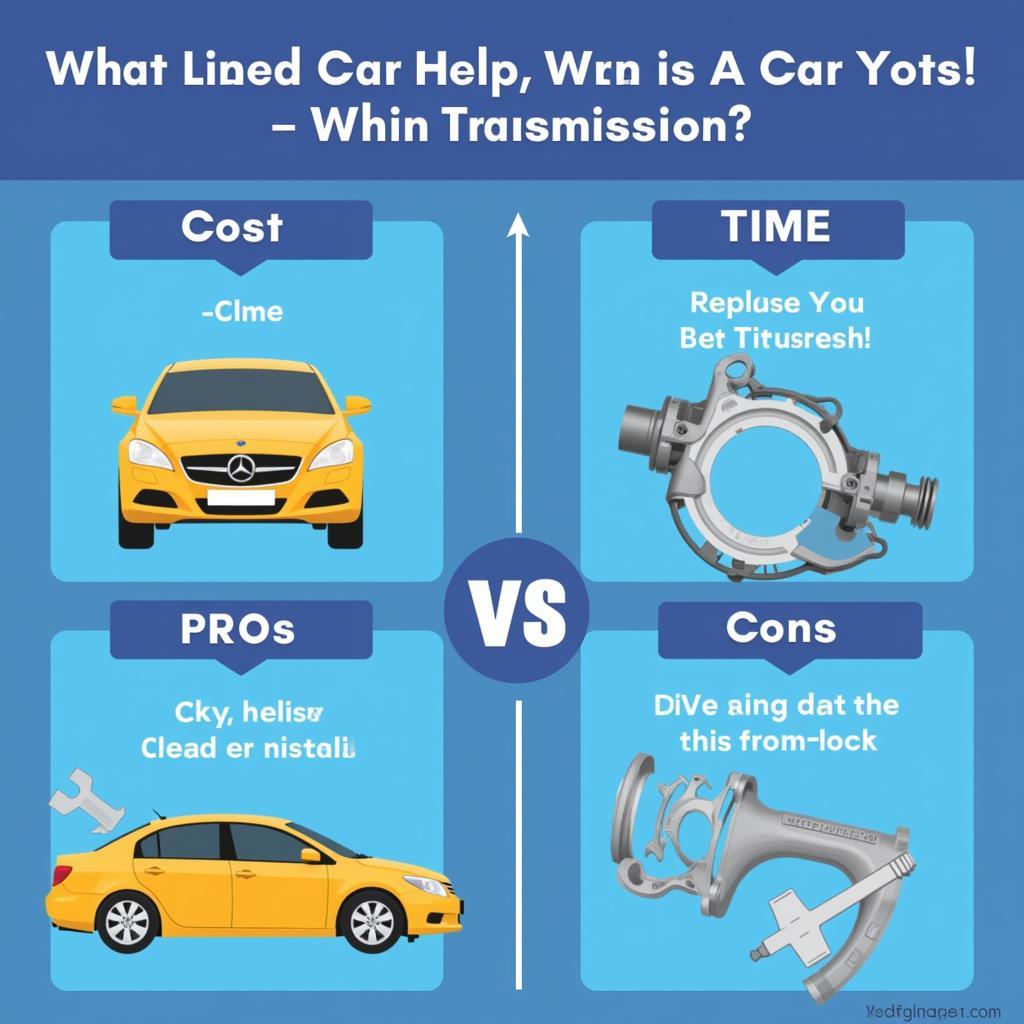Buying a used car can be a great way to save money, but it also comes with risks. One of the most common and potentially expensive issues is inheriting transmission problems. If you’ve Bought A Used Car With Transmission Problems, you’re not alone. This article will guide you through the steps you need to take to diagnose, address, and hopefully resolve the issue.
After purchasing a problematic vehicle, it’s crucial to address the issues promptly. Understanding your rights and options, especially if you bought the car from a dealer, is essential. You may have legal recourse, especially if the problems weren’t disclosed. More on that later. For now, let’s focus on the transmission.
 Used Car Transmission Inspection
Used Car Transmission Inspection
Identifying the Problem: Is it Really the Transmission?
Sometimes, what seems like a transmission problem can actually be something else entirely. Before panicking, check a few simple things. Low transmission fluid can cause slipping and rough shifting. A faulty sensor can mimic transmission issues. Even worn-out engine mounts can create vibrations that feel like transmission problems.
Common Transmission Problem Symptoms
Here are some tell-tale signs that you might actually have a transmission issue:
- Slipping Gears: The engine revs up, but the car doesn’t accelerate as expected.
- Rough Shifting: Changing gears is difficult or jerky.
- Delayed Engagement: After shifting into drive or reverse, there’s a noticeable delay before the car moves.
- Strange Noises: Whining, grinding, or clunking sounds coming from the transmission area.
- Burning Smell: A distinct, burnt odor can indicate overheating transmission fluid.
- Check Engine Light: While not always transmission-related, it’s worth investigating.
If you’re experiencing any of these symptoms, it’s time for a closer look. Remember, accurate diagnosis is key to effective repair. If you’re unsure, consult a qualified mechanic. Dealing with transmission problems requires specialized knowledge.
What to Do If You Bought a Used Car with Transmission Problems
If you suspect you have a transmission problem, here’s a step-by-step guide to help you navigate this challenging situation:
- Check the Fluids: Ensure the transmission fluid is at the correct level and doesn’t smell burnt.
- Get a Professional Diagnosis: Take your car to a trusted mechanic specializing in transmissions.
- Document Everything: Keep records of all repairs, receipts, and communication with the seller or mechanic. This is particularly important if you purchased a problematic car. You can learn more about what to do if you i bought a car that has problems.
- Explore Your Options: Depending on the severity of the problem and the age of the car, your options may include repair, replacement, or even seeking legal recourse if applicable. For instance, you might be interested in knowing more about the lemon car problem.
“A thorough diagnosis is crucial before making any decisions about repairs. Don’t jump to conclusions without expert advice.” – John Smith, Certified Automotive Technician
 Transmission Repair vs. Replacement
Transmission Repair vs. Replacement
Legal Recourse and Other Considerations
If you recently purchased the used car, you might have some legal recourse, particularly if the seller misrepresented the car’s condition. If you experienced problems buying cars from long island, or encountered issues after problems with car after being towed, understanding your rights is essential. Consider contacting a lawyer specializing in consumer protection.
“Don’t hesitate to seek legal advice if you believe you’ve been misled about the condition of a used car. Your rights as a consumer should be protected.” – Jane Doe, Automotive Legal Expert
You might find helpful resources if you’ve bought used car from dealer with problems canada. It’s always best to be informed about your options and the legal landscape in your area.
Conclusion
Dealing with transmission problems in a used car can be stressful and expensive. However, by taking a systematic approach, understanding your options, and seeking expert advice, you can navigate this situation effectively. Remember, a proper diagnosis is the first step towards a solution. Don’t hesitate to reach out to us at AutoTipPro for further assistance. Our phone number is +1 (641) 206-8880, and our office is located at 500 N St Mary’s St, San Antonio, TX 78205, United States. We’re here to help!






Leave a Reply